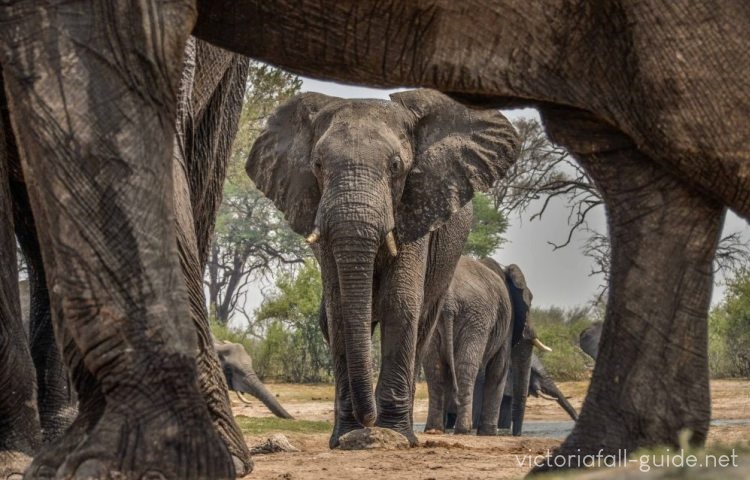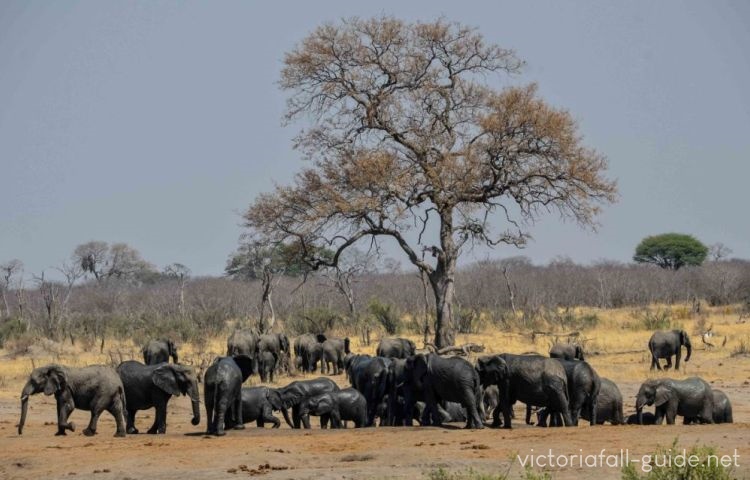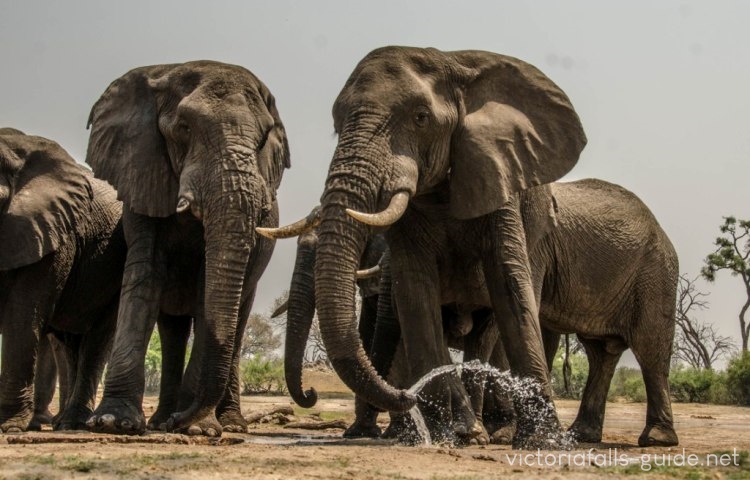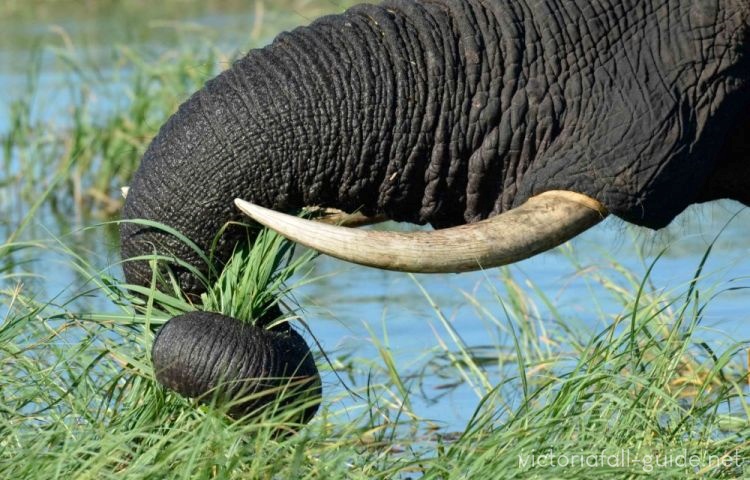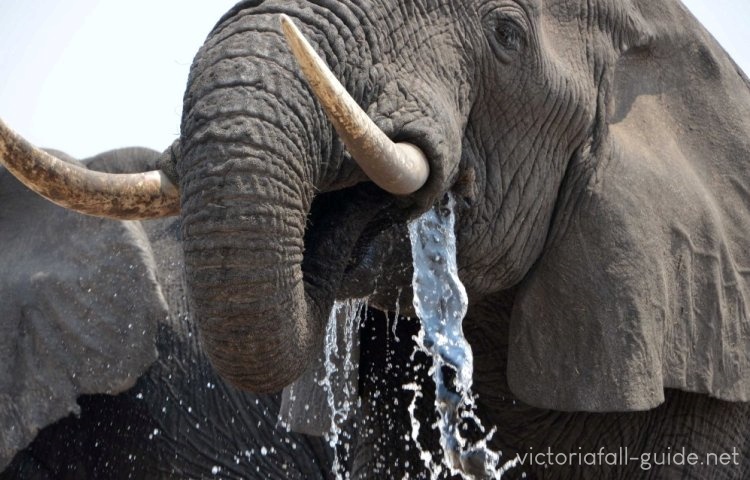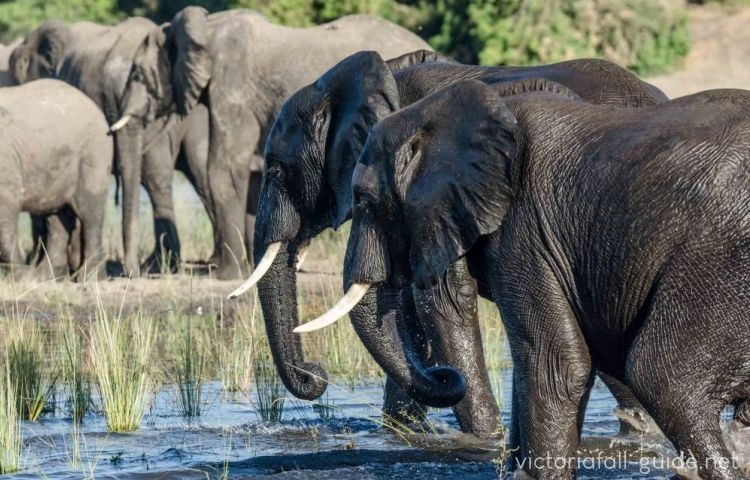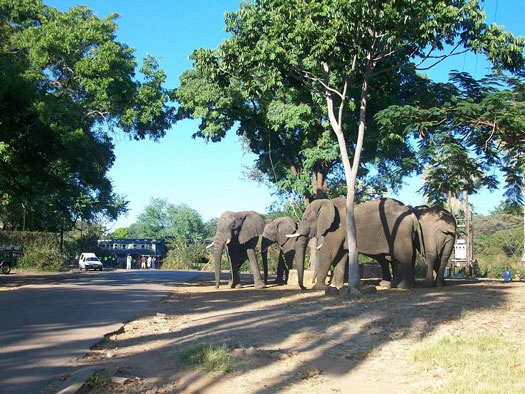African ElephantThe African Elephant (or Savanna Elephant) is the largest living land mammal on earth, with a large bull tipping the scales at 6.5 tonnes. They are truly massive animals, but for their size, these are gentle giants, incredibly intelligent and highly social animals. For all the research that has been done on these amazing animals, there is still so much we don’t know about them.
The world's largest land mammals Quick Facts
Latin name: Loxodonta africana How Many Species Of Elephant Are There In The World?There are only three living members of the family Elephantidae alive today. The African Elephant (Loxodonta africana) is the largest and can be found throughout Africa, the African Forest Elephant (Loxodonta cyclotis) inhabits the forest of Central and West Africa, and the Asian Elephant (Elephas maximus) which can further be divided into three subspecies, roaming throughout South-East Asia and the Indian Subcontinent. Several extinct species of elephant-like creatures have roamed the earth throughout time, the most well-known of these being the gigantic Woolly Mammoth (Mammuthus primigenius) who disappeared as little as 3 700 years ago, on Russia's Wrangel Island in the Arctic Ocean. What Is The Difference Between a Male and Female Elephant?Males and females may be hard to tell apart at a quick glance. However, the bulls are generally overall much larger with a broad head and powerful neck and shoulders. The bull's tusks tend to be much thicker and overall heavier than the female's long and slender tusks. A side profile of the head shows the bulls with a large rounded forehead while the females have a much more angular appearance. What Is The African Elephant Herd Structure?The core of any elephant population is the breeding herds. These are matriarchal societies, headed by the oldest and wisest female (the matriarch). She leads and protects the herd using ancient knowledge passed down from generation to generation. She knows where the best grazing is, when and where the trees are fruiting, the most reliable source of water as well as the safest and quickest routes between these all.
Large elephant herd at a waterhole These breeding herds are made up of generally a few related females and their various ages of offspring, females will usually stay with the natal herd. Young males are pushed out of the natal herd by the females as soon as they start reaching adulthood, which is at around 15 or 16 years old. These young males are forced to wander the savanna by themselves. However, loneliness and necessity lead them to find the company of other males, generally older bulls. These wise old bulls teach the youngsters the 'ropes' and the subtle yet intricate social dynamic and hierarchy between the different males in the area, as well as the female breeding herds.
Elephants drinking water How Much Does An African Elephant Eat?Being the largest land mammal comes with its challenges. For one, to support such an enormous frame elephant must eat almost constantly, 16 + hours are devoted to gathering and eating up to 300kg (650lbs) of food daily. This incredibly varied diet consists of grass, leaves, fruit, bark, tubers and bulbs and pretty much any other vegetable matter that they can find.. The reason they have to eat so much is that their digestive system is known as a hind-gut fermentation process. Making use of an enlarged caecum, the system is designed to process large amounts of food as quickly as possible but is less efficient, only being able to extract around 40% of the nutritional value of the food, unlike ruminants with their four-chambered stomachs that can extract up to 80% of the nutritional value of what they eat. More About The African Elephant's TrunkElephants obtain their various foods with their trunk, an amazingly versatile tool. Highly adapted and evolved, it contains over 40 000 muscle units, compared to the roughly 700 skeletal muscles in the entire human body.
The versatile trunk is incredibly dextrous The trunk is actually an extension of the nose and upper lip. With the nasal cavities going down the entire length of the trunk. They use these for their incredibly acute sense of smell but also when drinking, sucking up to 10 litres of water into the nasal cavity, they will then stick the end of their trunk into their mouth and 'spray' the water down their throat.
How they drink water In the African Elephant (Loxodonta africana) the end of the trunk has two finger-like protrusions that are so precise they can pick up a tiny seed, while the rest of the trunk is so dexterous and powerful it can be used to push over large trees. More About the African Elephant's TusksOften used in conjunction with the trunk are the tusks. Not only used in fighting the tusks are also an important tool for feeding, digging, snapping branches or prying bark off trees. You can see if an elephant is left-handed or right-handed by the amount that they use their left or right tusk. Often being worn down or sometimes broken from over-use on the one side. Tusks are actually just modified incisor teeth, known as ivory their enamel and dentine structure makes them extremely valuable and this fact has led to the large decline of numbers due to illegal poaching. More About the African Elephant's TeethThe rest of their teeth are unique, rather than erupting up from the jaw, they grow from the back of the jaw and move forward in a conveyer type motion. Once they reach the front they break up and fall out, being replaced by the next set behind them. However, this is not an endless cycle and they will only ever have 6 sets of these molars. Once the last set of molars has worn down the elephant struggles to chew food and slowly starts to lose condition and eventually they die of malnutrition or starvation. Experts can tell the age that an elephant died, by the set of molars showing in the skull. More About the African Elephant's EarsElephant have extremely large ears, although they do have incredible hearing the ears are used for a different function. Elephants cannot sweat so they are at risk of overheating, this is where the ears act like a car radiator, cooling them down. The ears carry a huge amount of blood vessels very close to the surface of the skin, the warm blood is cooled by heat diffusion as the ears flap and create air movement over them, the cool blood is then pumped back into the body to cool the internal organs.
Large ears act like a radiator to cool them down Do African Elephant Occur in Victoria FallsElephants are prolific in and around Victoria Falls. In the game parks surrounding the town, they are common in large herds and it would be unusual not to see one of these magnificent animals if you were on a 2 or 3-day safari here. Elephants can be a bit of a problem in the residential part of town, as they wander into town in search of the green and delicious fruit trees and plants from the lush gardens. You may have also seen photos of elephants walking down the main street of Victoria Falls.
Elephants often wander through Victoria Falls town Elephants also became a problem at the towns municipal rubbish site, which was not particularly well managed. Elephants would enter the dumpsite during the night, feeding off discarded tasty nit bits. However, in doing so they would ingest plastic and other harmful materials which led to several animals dying. The Ele-fence Project was set up to keep the elephants out of the dumpsite and stop any further deaths. These are very wild animals and are not tame. Visitors to Victoria falls should treat them with the utmost respect.
|
|
||
|
|
|||
|
|
|||
|
| |||
